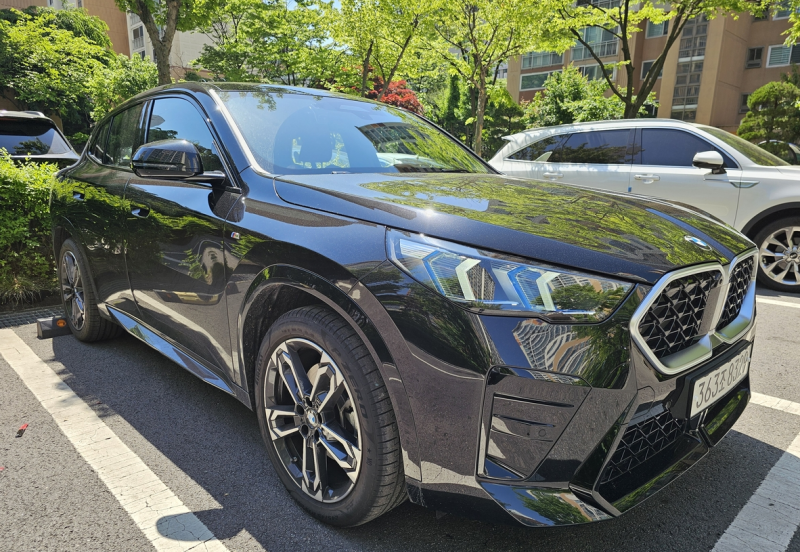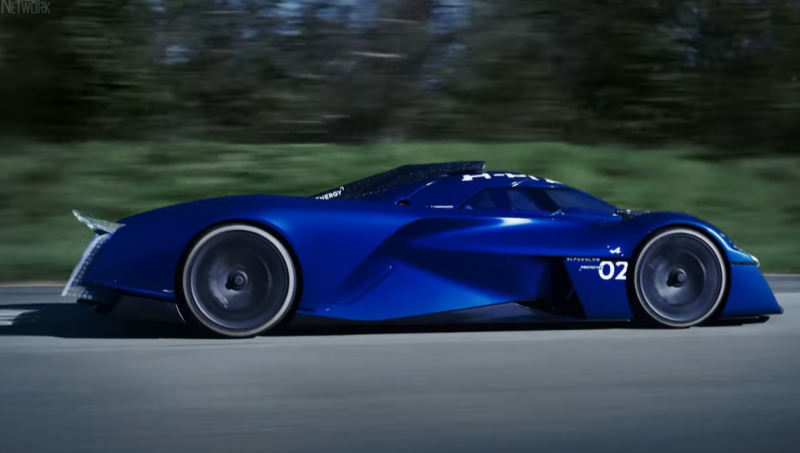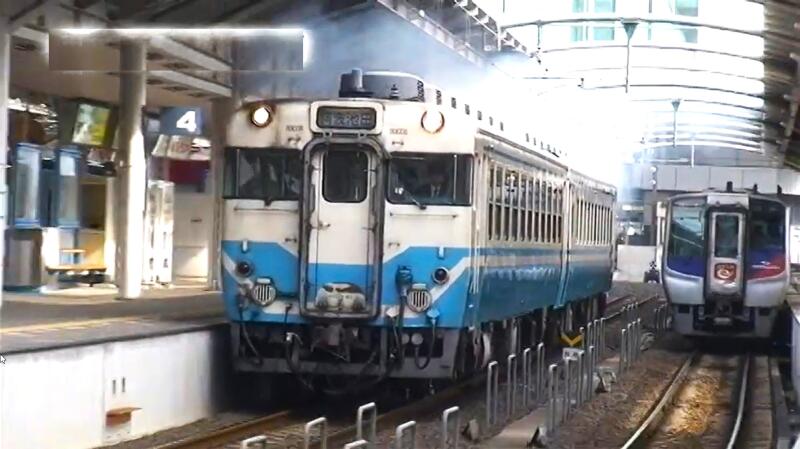In parallel, in the 60s, the development of another urban transport legend was taken up at the Czechoslovak enterprise ČKD. They created the successful Tatra T3 tram, which was assembled here until the end of the 90s. It was these two models that became the basis of the park of many large Soviet cities.
 "Vityaz-Moscow" on one of the capital's routes. Photo: youtube.com
"Vityaz-Moscow" on one of the capital's routes. Photo: youtube.comTheir exploitation continued in the following decades. Sometimes such rare compositions are found today. But, of course, the designs of 60 years ago are noticeably outdated and no longer meet current requirements. Attempts to create a worthy replacement have been made more than once. We will talk about one such good technology in terms of characteristics today.
A worthy example of tram technology
One of the main requirements of our time is the maximum comfort of the passenger during the trip. Those who had to ride on the models of trams mentioned above understand perfectly well what this is about. Shaking, pitching and throwing from side to side is a common thing for old high-floor units. Therefore, the first condition is that the new tram (like buses or trolleybuses) must be low-floor.
At the dawn of the new millennium, manufacturers of the most massive tram model undertook to embody this idea. Project 71-625 was then launched at UKVZ. Difficult times and other difficulties prevented its successful implementation. Work was frozen until 2013.
 Stylish dashboard. Photo: youtube.com
Stylish dashboard. Photo: youtube.comAfter that, they tried to resume, but less than a year later there was a break in the contractual relationship between the main enterprise and the owner of the rights to the low-floor trolley design (the company's Trading House). Such an unpleasant turn could simply bury a promising project.
Fortunately, things turned out differently. One of the owners of the TD decided to continue the work on his own, creating the Transport Systems PC. Further steps, such as the purchase of technical documentation and the involvement of the chief designer of the main enterprise, showed the seriousness of the businessmen's intentions.
After a huge investment of about 10 million euros, the designers managed to create the first two running prototypes. To successfully implement a large-scale project, the capacities of three production units were involved at once:
✅ Tver Mechanical Plant of Electric Transport
✅ Tver Carriage Works
✅ Nevsky Plant of Electrotechnical Transport
Each of the participants received their own range of responsibilities and work. The first Tver enterprise was obliged to produce low-floor bogies. Their countrymen at that time were engaged in assembling wagons for them. All the electrical equipment of the new trains was provided at the Nevsky Zavod. Thus, by joint efforts, the implementation of the project went as quickly as possible.
It took the producers only a few months. By the end of 2014, the first tram No. 0203 "Vityaz" was presented. For his tests, they chose the capital's tram depot. Bauman.
After successful 5-month trials, the transport was issued a certificate of conformity. This opened the green light for serial production. By the way, he was awarded the title of the first Russian tram equipment subjected to the voluntary certification procedure (DS AT).
The high appraisal of independent specialists influenced not only the start of production. She noticeably enlivened and potential buyers. The first was St. Petersburg. A month after certification, the manufacturing company won the local auction. PK received the exclusive right to supply 10 new Vityaz cars (71-931) for the city tram fleet. Lead time: 2015/17. Very soon, manufacturers wanted to improve the design of their tram.
Improved "Vityaz M"
The first success spurred manufacturers to move forward, making the tram even more attractive to customers. In the course of a short operation, technical specialists drew attention to some weaknesses in its design. They tried to eliminate them in the modernized version:
✅ by improving the layout of the passenger space
✅ adding streamlining of the frontal part
✅ changing the design of the rear of the car
By the beginning of the summer of 2016, a modernized version of the Vityaz M was presented to the public. For the first time it could be seen at the Yekaterinburg exhibition "Innoprom". But for testing, the novelty went to the city on the Volga. She was used as a transport for the Volgograd light rail.
 Places for the disabled, bicycles or strollers. Photo: youtube.com
Places for the disabled, bicycles or strollers. Photo: youtube.comIn the new version, the same elastic low-floor trolley of our own design was used. The car was made in a modular way. So the driver's cabin and the rear area were separated from the main passenger compartment. This made it possible to leave the opportunity for manufacturers to vary the production of cars, depending on the wishes of future customers. Among these is a single-car design with two cabins and double-sided passenger doors. For megacities, a three-section package is provided (if necessary, even more composition).
Thanks to changes in the external and internal design, the updated car received even more elegance and a modern look. In addition to this, it is worth adding high energy efficiency and safety for the environment. It is not surprising that "Vityaz M" was also interested in the capital's leadership.
New trams for the Russian capital
After spending the triumphant summer of 2016, by the beginning of autumn, the creators of Vityaz M drew a bold line. At this time, they received a tender for the supply of 300 new tram cars for the Moscow fleet. The cost of the three-year contract was impressive - 56 billion rubles.
 Spacious and modern interior. Photo: youtube.com
Spacious and modern interior. Photo: youtube.comA year later, 80 copies of the Vityaz M were already cruising the capital. They ended up in the same depot. Bauman. For their service, six routes were allocated in the north-eastern part of the city. They received the name "Vityaz-Moscow" and began their work in the areas of Sokolina Gora, Novogireevo and others. I think it's time to pay attention to the technical parameters of this technique:
✅ 60 seats
✅ in each section - a place for wheelchairs
✅ near each seat - USB-connectors for charging
✅ folding ramps
✅ climate control system
✅ targeted door opening
Let's pay more attention to the last function. It is not yet so widespread. Each door has a wide green button. By pressing it, everyone can independently open the door he needs. We did not forget about the groups of passengers with limited mobility. For them, a duplicate blue button is provided, located much lower.
In general, wheelchair users, entering the salon, will definitely feel the care of themselves from the manufacturers. In addition to ramps and special parking spaces in the cabin, there are also fixation belts. This will not only add convenience to the journey of passengers of a vulnerable category, but also make it safer.
 "Vityaz-Leningrad" sample 2020. Photo: youtube.com
"Vityaz-Leningrad" sample 2020. Photo: youtube.comIn September 2020, the St. Petersburg division of the NZET Corporation introduced a new type of tram for the northern city of Vityaz-Leningrad. It was made in an aluminum body. This serves as another proof that the history of the modern tram continues successfully. In total, 526 cars of all modifications have been assembled so far.










